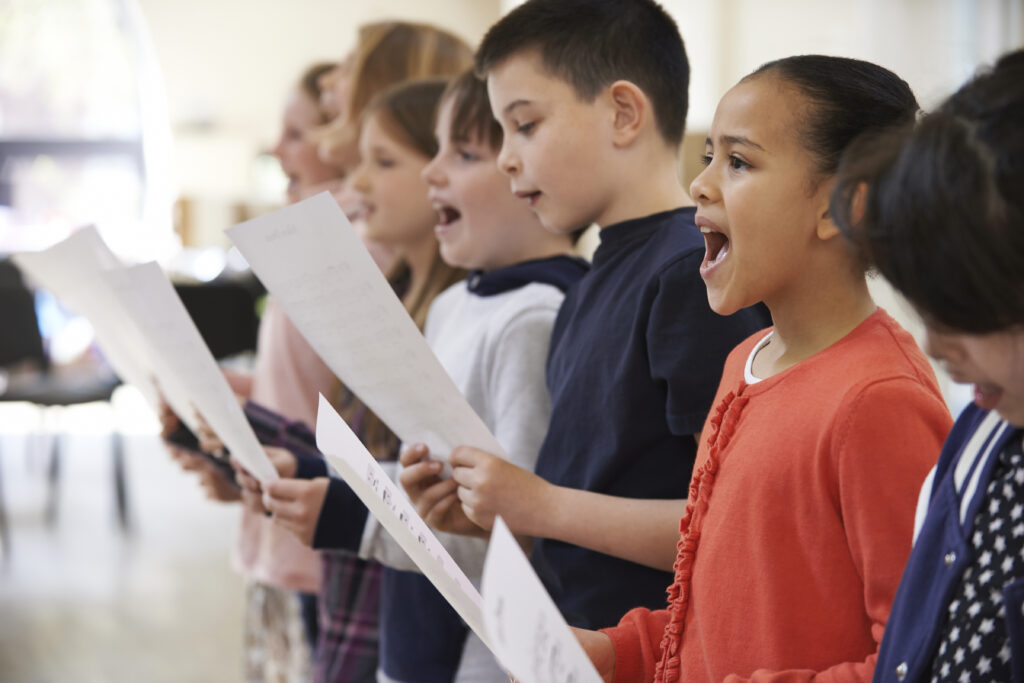Cultural Democracy in the Classroom

The first time I encountered the concept of cultural democracy was on a 2 train in Brooklyn. I was on my way home from my teaching artist residency at P.S. 203. One of the books I read to pass the time on that commute was New Creative Community: The Art of Cultural Development by Arlene Goldbard, a foundational text in the field of community cultural development. It was in this book that I discovered cultural democracy, a core principle of community cultural development that asserts that, “All cultures are essentially equal and society should not promote any one as superior to the others.” (p. 43, Goldbard) Cultural democracy is primarily a paradigm for cultural policy and arts funding that maintains that in this multicultural nation all cultures are valuable and deserve an equitable share of resources and support.
From its founding, the U.S. has enacted the inverse of cultural democracy – the democratization of culture. This is a top-down, center-out scheme where the dominant and approved cultural products and beliefs are distributed to everyone on the pretense that access/exposure to this “high” culture is equality. The approved cultural products, beliefs and dogma are primarily from deceased, white, Western European, heterosexual, cisgender men and their respective values, norms and perspectives.
The democratization of culture continues to dominate America’s cultural policy and funding for the arts. The Helicon Collaborative released a study in 2017, Not Just Money, that found that 58% of all contributed income in the non-profit arts sector goes to 925 organizations, just 2% of the 41,000 groups tracked. These 925 organizations all have annual budgets of more than $5 million, promote Euro-centric culture, and primarily serve upper-income, white communities. The education and community engagement departments of these organizations send teaching artists into the “underserved” and “culturally deficient” communities as proselytizers with the goal of enrichment by means of access and exposure to their sanctioned culture.
In my first few years as a teaching artist, my approach was rooted in this deceivingly benevolent presumption of bringing culture to “underserved” (i.e. marginalized, disinvested and oppressed) communities. At the time, I couldn’t imagine teaching music without a canon as the foundation for the curriculum. I made the mistake of confusing the equality of the democratization of culture with the equity of cultural democracy.
Cultural democracy on the national level cannot be achieved by the actions of one individual or organization. However, on the individual level, the classroom is a place where it can be practiced. Artists and educators have the opportunity to create and facilitate spaces for students to create and engage with art that is meaningful to their experiences, values and perspectives without imposing or centering Euro-centric culture. This making-based curriculum centers the art form, not a canon, as the vessel for aesthetic experience. Through art-making, students can explore their own culture in addition to the cultures of others in a kind of space that National Endowment for the Arts Chair, Dr. Maria Rosario Jackson, terms, “cultural kitchens – spaces that allow for cultural self-determination.” I’ve written previously on a few methods for students to create music in a space that supports this sort of exploration.
Cultural democracy in the classroom also supports alternative ways of knowing and being. Culture extends beyond art objects and products. It is an integral part of an individual’s worldview, the kaleidoscopic lens through which one experiences and makes sense of the world. Therefore, in the classroom, cultural democracy also encompasses recognizing and supporting the plurality of ways of knowing and being. A classroom that promotes cultural democracy is a classroom that is full of love, learning and equity.



